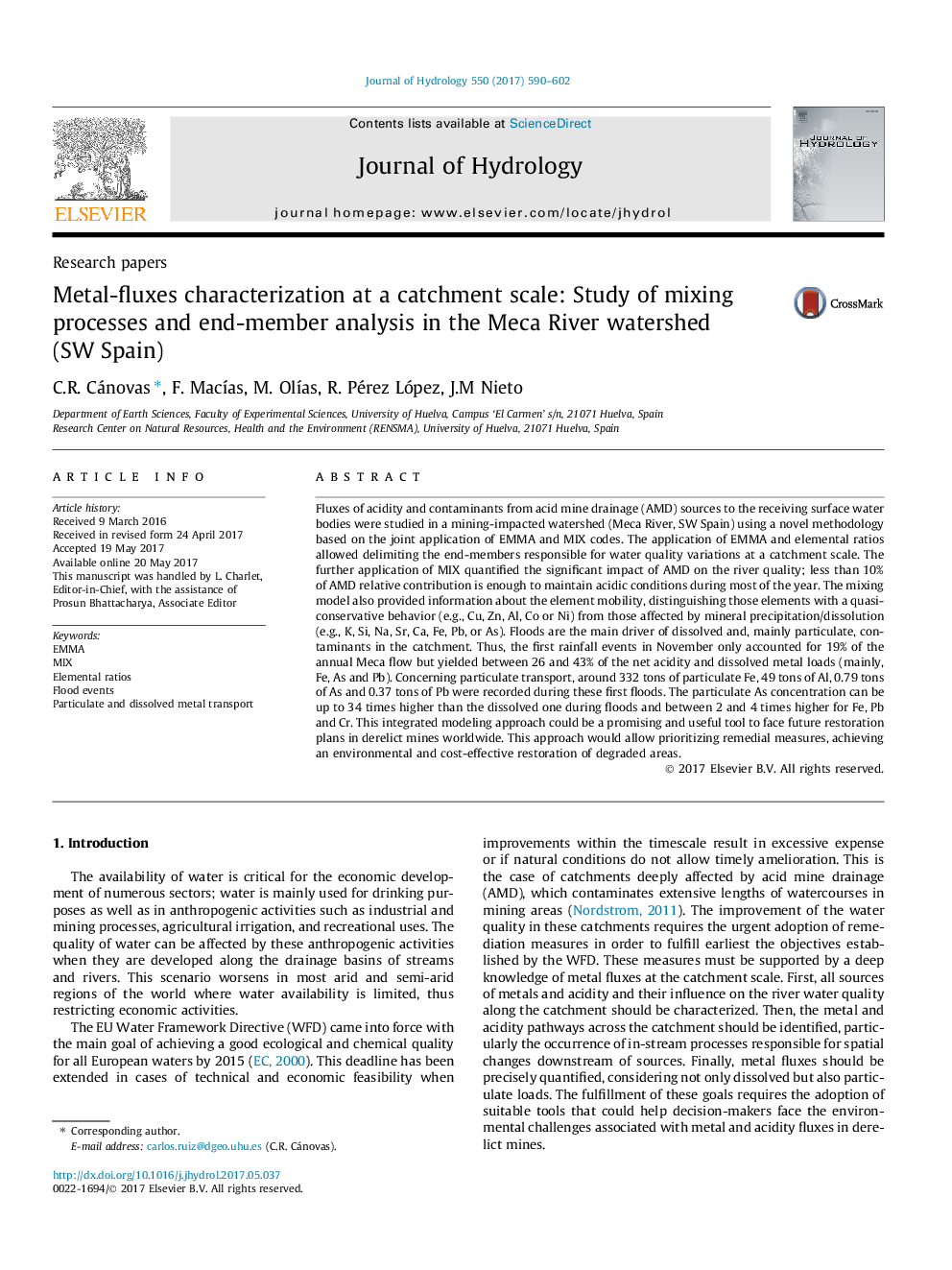| Article ID | Journal | Published Year | Pages | File Type |
|---|---|---|---|---|
| 5770779 | Journal of Hydrology | 2017 | 13 Pages |
â¢Metal and acidity fluxes at a catchment scale are studied by EMMA and mixing model.â¢Sample variance is explained by mixing of freshwaters and AMD from Esperanza.â¢Less than 10% of AMD relative contribution maintain pH < 3.5 most of the year.â¢Floods are the main drivers of particulate and dissolved metal/loids from sources.â¢During floods As particulate transport can be up to 34 times higher than dissolved.
Fluxes of acidity and contaminants from acid mine drainage (AMD) sources to the receiving surface water bodies were studied in a mining-impacted watershed (Meca River, SW Spain) using a novel methodology based on the joint application of EMMA and MIX codes. The application of EMMA and elemental ratios allowed delimiting the end-members responsible for water quality variations at a catchment scale. The further application of MIX quantified the significant impact of AMD on the river quality; less than 10% of AMD relative contribution is enough to maintain acidic conditions during most of the year. The mixing model also provided information about the element mobility, distinguishing those elements with a quasi-conservative behavior (e.g., Cu, Zn, Al, Co or Ni) from those affected by mineral precipitation/dissolution (e.g., K, Si, Na, Sr, Ca, Fe, Pb, or As). Floods are the main driver of dissolved and, mainly particulate, contaminants in the catchment. Thus, the first rainfall events in November only accounted for 19% of the annual Meca flow but yielded between 26 and 43% of the net acidity and dissolved metal loads (mainly, Fe, As and Pb). Concerning particulate transport, around 332Â tons of particulate Fe, 49Â tons of Al, 0.79Â tons of As and 0.37Â tons of Pb were recorded during these first floods. The particulate As concentration can be up to 34 times higher than the dissolved one during floods and between 2 and 4 times higher for Fe, Pb and Cr. This integrated modeling approach could be a promising and useful tool to face future restoration plans in derelict mines worldwide. This approach would allow prioritizing remedial measures, achieving an environmental and cost-effective restoration of degraded areas.
Graphical abstractDownload high-res image (208KB)Download full-size image
